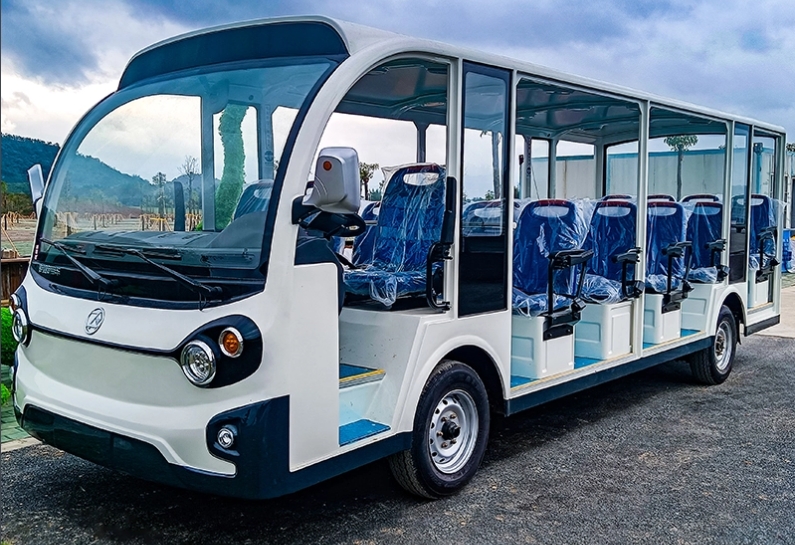Common types and performance characteristics of electric sightseeing car motors
Currently, there are three main types of motors used in the electric sightseeing car industry: DC separately excited motors, DC series excited motors and AC motors. The electric sightseeing car motor has the characteristics of smooth starting and smooth driving, and the driving is very comfortable. Most electric sightseeing cars with more than four seats use DC series motors and series controllers, which have the characteristics of quick start and strong power. Usually electric scooters and more and more electric sightseeing cars in scenic spots use AC motors and AC controllers, which have smooth start, large torque, and functions such as regenerative braking and reverse charging.

1. DC brushed motor
Generally speaking, the main advantages of DC electric sightseeing car motors are simple control, mature technology, and excellent control characteristics that AC motors cannot match. However, due to the existence of brushes and mechanical commutators, it does not limit the further increase of the motor's overload capacity and speed. Moreover, if it runs for a long time, the brushes and commutator need to be frequently maintained and replaced. In addition, due to the losses on the rotor, heat dissipation is difficult, which limits the further improvement of the motor's torque-to-mass ratio. In view of the above-mentioned shortcomings of DC motors, currently newly developed electric vehicles basically do not use DC motors.
Frequently asked questions about brushed DC electric sightseeing car motors :
1) Carbon brush wear: Carbon brushes need to carry large currents and continuous mechanical friction, which will cause significant consumption. Generally, electric sightseeing vehicles that are used frequently or have high load for a long time may be needed in about a year. Replace the carbon brush, otherwise it may cause two serious problems: (1) poor contact between the carbon brush and the rotor, causing the vehicle to not drive smoothly; (2) excessive carbon powder accumulates in the motor, and the internal temperature of the motor is too high when the motor is working, causing combustion. Burn out the motor.
2) Sensor failure: The sensors of the electric sightseeing car motor include temperature, speed and excitation sensors. These are also the more fragile parts and are easier to damage. Once damaged, the motor will not work properly or even burn out and needs to be replaced in time.
2. DC brushless electric sightseeing car motor
Electric sightseeing car motor: at present, the application of permanent magnet brushless DC motor in the electric sightseeing car industry is still relatively small, and it is mostly used in two-wheeled electric cars. However, permanent magnet brushless DC motor is a high-performance motor. Its larger feature is that there is no mechanical contact structure composed of brushes, and it has the external characteristics of a DC motor; in addition, it adopts a permanent magnet rotor without excitation loss: the heated armature winding is installed on the outer stator, which is easy to dissipate the heat; alternatively, the permanent magnet brushless DC motor is free of commutation sparks and radio interference, with a long service life, reliable operation and easy maintenance. In addition, its speed is not limited by mechanical commutation. If air bearings or magnetic levitation bearings are used, it can reach hundreds of thousands of revolutions per minute. Compared with the permanent magnet brushless DC motor system, it has higher energy density and higher efficiency, and has good application prospects in electric vehicles.



























 XINDA
XINDA